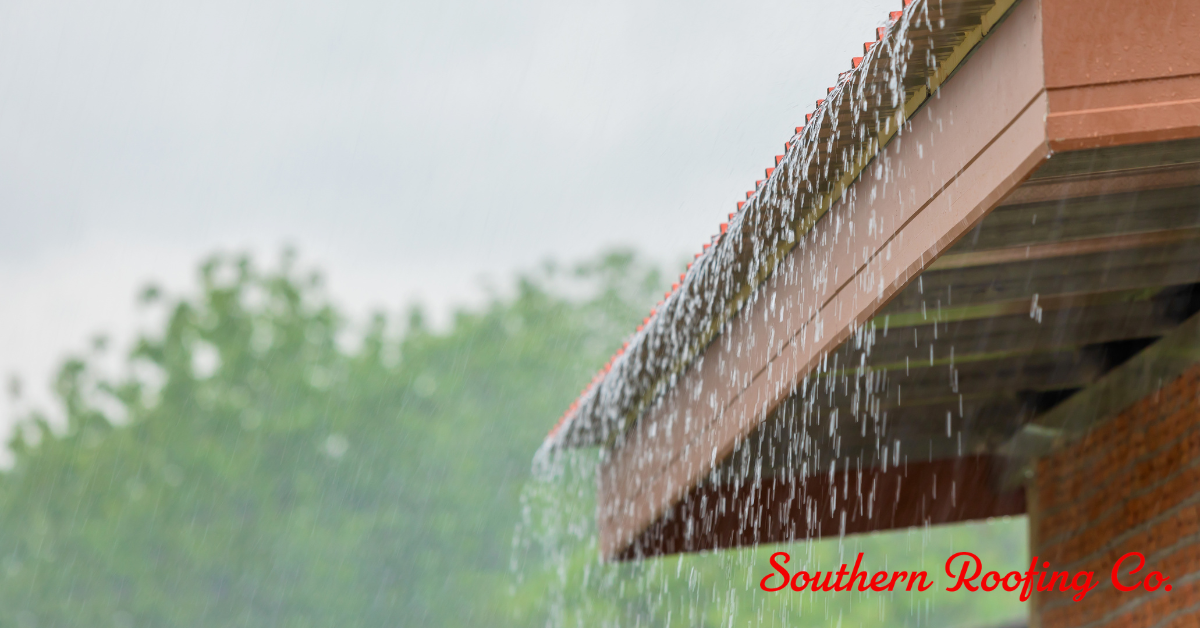
The arrival of spring brings warmer temperatures, increased rainfall, and the potential for severe weather events, all of which can have a significant impact on the integrity and lifespan of your roof. In Middle Tennessee, where spring weather can fluctuate wildly, understanding how these conditions affect various roofing materials and constructions is crucial for homeowners. This blog post examines the effects of typical spring weather on roofs, offering insights to help you ensure that your roofing system remains robust and durable.
Spring Weather Characteristics in Middle Tennessee
- Variable Temperatures: Spring in Middle Tennessee is marked by rapid temperature swings, which can expand and contract roofing materials.
- Increased Rainfall: This season typically sees a higher volume of rain, which can test the water resistance of any roof.
- Storms and Severe Weather: Spring storms, often accompanied by high winds and sometimes hail, can cause immediate and visible damage to roofs.
- Humidity and Condensation: The increased humidity can also lead to condensation issues, particularly in poorly ventilated attic spaces.
These elements each interact with roofing materials in different ways, potentially accelerating wear and tear or, in some cases, shortening the expected lifespan of a roof.
Impact of Spring Weather on Different Roofing Materials
Asphalt Shingles
- Temperature Fluctuations: The expansion and contraction of asphalt shingles in fluctuating temperatures can cause them to become brittle and crack over time.
- Moisture Resistance: Prolonged exposure to rain can lead to water seepage under shingles if they are not properly overlapped or if the underlayment is compromised.
- Wind Resistance: High winds can lift edges of shingles or even tear them off the roof.
Metal Roofing
- Durability: Metal roofs generally offer superior durability and are less likely to be damaged by high winds or hail compared to other materials.
- Corrosion: However, constant exposure to rain and humidity can lead to corrosion, especially if the protective coatings are damaged.
- Temperature Conductivity: Metal roofs can expand and contract more than other materials, requiring appropriate installation techniques to accommodate movement without causing damage.
Tile Roofing
- Weight and Durability: Tiles are extremely durable and have excellent longevity, resistant to most weather conditions experienced in spring.
- Impact Resistance: While generally robust, clay and concrete tiles can crack under severe hail impacts.
- Water Absorption: Properly sealed tile roofs have good water resistance, but if the sealant deteriorates, water absorption can lead to the growth of moss and algae.
Flat Roofs (including EPDM, TPO, and PVC)
- Water Drainage: The key challenge for flat roofs is ensuring good drainage; standing water can degrade the material over time, especially during the rainy spring season.
- Puncture Resistance: Flat roofs are susceptible to punctures from debris brought by spring storms, which can lead to leaks.
- UV Exposure: With longer daylight hours, UV exposure can increase the rate of wear for certain materials, like EPDM, which may require additional UV protective coatings.
Preventive Measures and Maintenance Tips
- Regular Inspections: Conduct bi-annual roof inspections, particularly after winter, to check for damage from ice or snow that may become problematic with spring rains.
- Gutter Maintenance: Clean and inspect gutters and downspouts regularly to ensure proper drainage during heavy spring rains.
- Trim Overhanging Branches: Reduce the risk of physical damage by trimming branches that could fall on the roof during a storm.
- Proper Ventilation: Ensure your attic is well-ventilated to prevent moisture buildup leading to condensation and mold growth.
- Check Flashings: Inspect and repair flashings around chimneys, vents, and skylights to prevent water from entering around these structures.
Spring weather presents unique challenges to roof maintenance, particularly in regions like Middle Tennessee with its dynamic climate. Understanding how different materials react to temperature fluctuations, moisture, and severe weather can help homeowners make informed decisions about the best roofing materials for their needs and how to maintain them. Proactive maintenance and timely repairs are crucial to extending the life of your roof and protecting your home. Request a quote from Southern Roofing Co. today!

